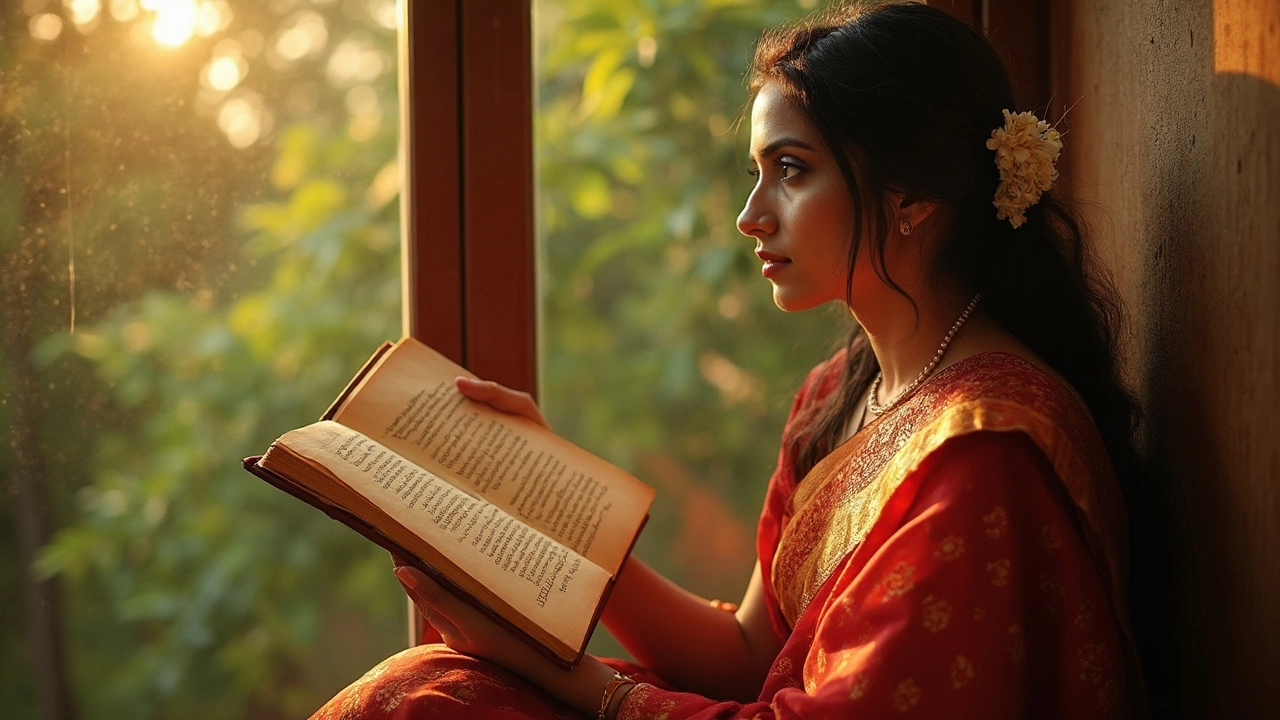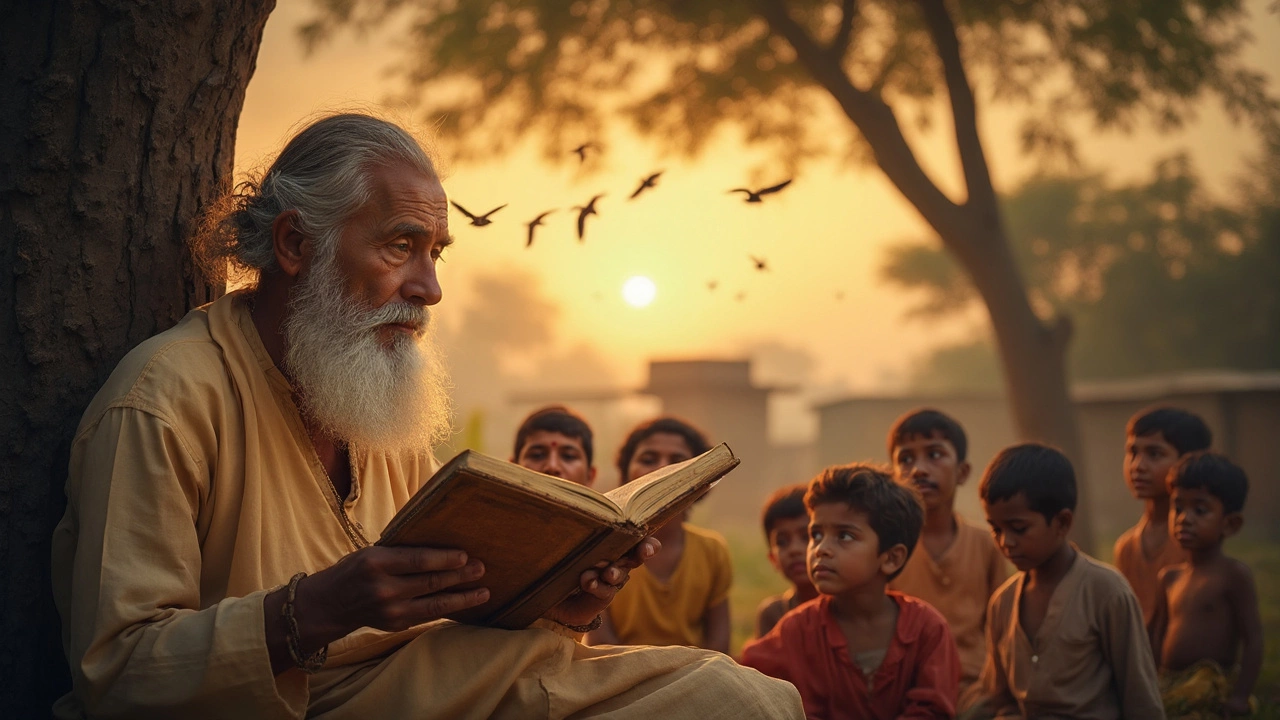Hardest Poem to Read: The Challenge of Sad Poetry in India

Ever tried reading a poem that just hits so hard it leaves your head spinning? That's what many find with sad poetry in India. The emotions are deep, the language can be intense, and sometimes, it feels like a roller-coaster of feelings. But what makes a poem the 'hardest' to read? It's not just about tricky words or complex structures.
The toughest poems often dive into deep emotional waters, which can be overwhelming. Think about poems dealing with loss, heartbreak, or societal injustices. They tug at the heartstrings in ways not everyone is ready for. And then there's the cultural backdrop. A poem might weave in storytelling styles or references that are unique to India, leaving those unfamiliar with them a bit lost.
If you're wondering how to tackle these literary giants, understanding your personal connection to a poem can be a good start. Sometimes, the lines that reflect our experiences or fears are the most challenging. And hey, don't shy away from seeking explanations or translations. It can make a world of difference when words and emotions start making sense together.
- The Emotional Depth of Indian Sad Poetry
- Cultural Contexts and Their Impact
- Personal Interpretations and Challenges
- Language and Complexity
- Tips for Reading and Understanding
The Emotional Depth of Indian Sad Poetry
Sad poetry in India plunges into emotional depths that can be both haunting and mesmerizing. These poems often tap into themes of loss, heartbreak, and existential angst, resonating with many readers who have felt similar emotions. The narratives are not only personal but often reflect larger societal issues, making them relatable to a diverse audience. For instance, a famous poem by Gulzar, one of India's celebrated poets, draws on themes of separation and longing, capturing a universal sense of despair.
Indian sad poetry leverages intense imagery and metaphors. Consider the works of Mirza Ghalib, whose writing is laden with complex feelings and philosophical musings. His ghazals often reflect an intense yearning and heartbreak, which many find deeply moving yet challenging to digest, especially when navigating the nuanced Urdu language he writes in.
Why It Strikes a Chord
One reason sad poetry from India is so impactful is its ability to speak directly to human experiences and emotions. The cultural context plays a vital role here. The poems often include layers that reference traditional customs, historical events, or classical literature, adding an additional layer of understanding and emotional impact.
The depth of these poems is not just in their words but in their rhythm and musicality. Classical mediums such as ghazals and nazms have specific structures and cadences, which add to the emotional intensity. This musicality evokes a visceral response in the listener and reader, making the poems not just read but felt.
The Struggle of Expression
Despite the widespread appeal, expressing such raw emotions on paper can be a daunting task. Poets like Faiz Ahmed Faiz and Sahir Ludhianvi are celebrated for their ability to articulate the pain of love and the harsh realities of life. These poets managed to peel back layers of personal and collective sorrow with extraordinary clarity and foresight.
For anyone diving into India's sad poetry, expect a journey through the passions and pains of life. It's not light reading, but it’s definitely rewarding. The depth you find in these poems will likely echo, resonate, and linger long after you’ve turned the page.
Cultural Contexts and Their Impact
Diving into **sad poetry** in India isn't just about the words on the page. It's about understanding the rich cultural tapestry that these poems are woven into. India, with its diverse traditions and languages, brings a unique flavor to every piece of poetry.
One key aspect is language. Poems written in regional languages often carry a cultural essence that can be lost in translation. For instance, a Marathi poem's elegance or a Tamil verse's rhythm can seem different when read in English. The cultural nuances in every line reflect centuries-old traditions and lifestyles specific to that region.
Then there's the influence of history. India has a past filled with ups and downs, struggles for freedom, social changes, and evolving identities, which are often embedded in its poetry. Poems might explore themes of colonial past, caste struggles, or urbanization, adding layers to their emotional intensity. These references might make a poem tough to crack for someone not familiar with the background.
Understanding Cultural References
Getting a handle on these poems often means diving a bit deeper into Indian culture. You might come across references to festivals, historical events, or local folklore that aren't just casual mentions—they carry hefty meaning for the locals. For example, a reference to Diwali might not just be about the festival but the symbolism of light over darkness, which adds another dimension to the poem's meaning.
Besides, religious references can often pop up, with meanings tied to tales from the Mahabharata or Ramayana. Even if you've never read these epic stories, knowing just a bit about them can enrich your understanding of the poem and enhance the reading experience.
Bridging the Gap
Faced with unfamiliar contexts, readers have a few options. Annotated versions of poems can be a goldmine, offering concise explanations of cultural references. Additionally, exploring discussions or critiques by Indian scholars can give you a fresh perspective on themes and styles.
Don't forget the power of multimedia. Listening to these poems being recited, especially in their original language, can showcase their rhythm and emotion in a way that words alone might not. It’s often in the cadence and tone that the true depth of **sad poetry** is revealed.

Personal Interpretations and Challenges
Diving into the world of sad poetry, especially from a diverse country like India, often means dealing with a spectrum of emotions and interpretations. It's fascinating how different poems resonate differently with each reader. One person might find solace, while another might feel overwhelmed by the same lines.
Personal experiences play a huge role in how we perceive poetry. A line about loss might deeply resonate with someone who's recently experienced it, making the poem infinitely more powerful—and sometimes more difficult to read. These emotional connections can add layers of meaning, making a simple stanza feel like a personal message.
India's rich linguistic landscape also adds to the complexity. A poem written in Hindi might carry nuances lost in English translation. Similarly, regional dialects like Bengali or Urdu offer cultural spins that need more than just a basic translation to fully appreciate. Understanding the cultural context can be challenging but hugely rewarding.
Navigating Emotional Depth
So, how do you handle these challenges? The key lies in patience and openness. Allow yourself to feel the emotions, even if they’re uncomfortable. Discussing your interpretations with others can also open up new perspectives. Often, what feels personal to us is a universal theme, and hearing another's take can be eye-opening.
Tools to Aid Understanding
- Use poetry annotations available online. They often break down complex ideas and shed light on historical or cultural contexts.
- Join poetry discussion groups. They're a great way to hear other interpretations.
- Look for readings or dramatizations. Hearing someone else’s emphasis can change the way you understand the poem.
While sad poetry in India is steeped in emotion, confronting these personal interpretations head-on can turn the challenge into a journey of discovery.
Language and Complexity
Diving into sad poetry in India often means tackling some pretty complex language. It's not just about words; it's about the vibes they create. The layers of meaning hidden in the lines can be hard to peel back if you're not familiar with the cultural and historical context.
The use of metaphors, symbols, and allegorical references are common in Indian poetry, and can often make a poem tricky to grasp on the first read. Let's face it, poetry isn't just meant to be understood at face value. Poems like those by Rabindranath Tagore or Mirza Ghalib demand that you read between the lines and truly feel the words.
"Poetry is when an emotion has found its thought and the thought has found words." – Robert Frost
One big factor is the use of different local dialects and traditional phrases that don't always translate directly into English. This makes the original text so vibrant yet potentially confusing for someone not familiar with those turns of phrase. Stylistic elements, like the use of classical Hindi or Urdu, often play a huge role in creating the complexity.
Breaking Down Tough Lines
If you come across a line that feels like a labyrinth of thought, break it down. Here's a little tip:
- Read the line a few times. Slow down and let the words sink in.
- Identify the key figures of speech.
- Think about the emotion or idea behind the line.
- Use resources like online forums or literary guides that specialize in Indian poetry.
When a poem uses intricate imagery or regional expressions, it can be like trying to solve a puzzle. But this complexity is also what makes diving into these poems rewarding. You'll not only understand the poem better but also connect on a deeper level with the culture it originates from.
It's all about putting effort into understanding these complex layers, and it can actually enhance your appreciation of the art form. So, don't get discouraged by the challenges—they're part of the beauty of exploring sad poetry in India.

Tips for Reading and Understanding
Reading sad poetry, especially from a rich cultural landscape like India, can be tricky. But hey, it's not rocket science. Just a few tips can make it much more approachable and enjoyable. Ready to dive in?
Start Simple
If you’re just getting into sad poetry, choose poems known for their straightforward language. Look for poets whose work is celebrated for being accessible yet poignant. You can build up to more complex pieces once you're comfortable with the basics.
Know the Context
Understanding the cultural and historical background can massively change how you interpret a poem. Spend some time learning about the era and the social issues it touches on, especially with India’s rich tapestry of history and expression. This extra knowledge can add layers to your understanding.
Break It Down
Don’t try to swallow a whole poem in one go. Break it down line by line or stanza by stanza. Analyze one part at a time and let it sink in before you move on. Jot down your feelings or interpretations. This technique makes difficult lines feel more manageable.
Discuss with Others
Join a book club or an online forum dedicated to poetry. Talking over the themes and lines with someone else can open up new ways of seeing the text. A fresh perspective can often highlight something you missed.
Find Resources
Sometimes a good old annotated version of a poem can clear things up. Look for books or online resources that provide insights and analysis about the poems you're reading. You'd be surprised how much help a little guidance can offer.
Practice and Patience
Like any skill, getting good at reading sad poetry takes time and effort. Be patient and keep at it. The more you read, the better you'll understand the nuances, and soon enough, you'll find them less intimidating and more rewarding.
Remember, the journey through poetry is personal and different for everyone. Use these tips to chart your own course and discover the beauty hidden in verses.